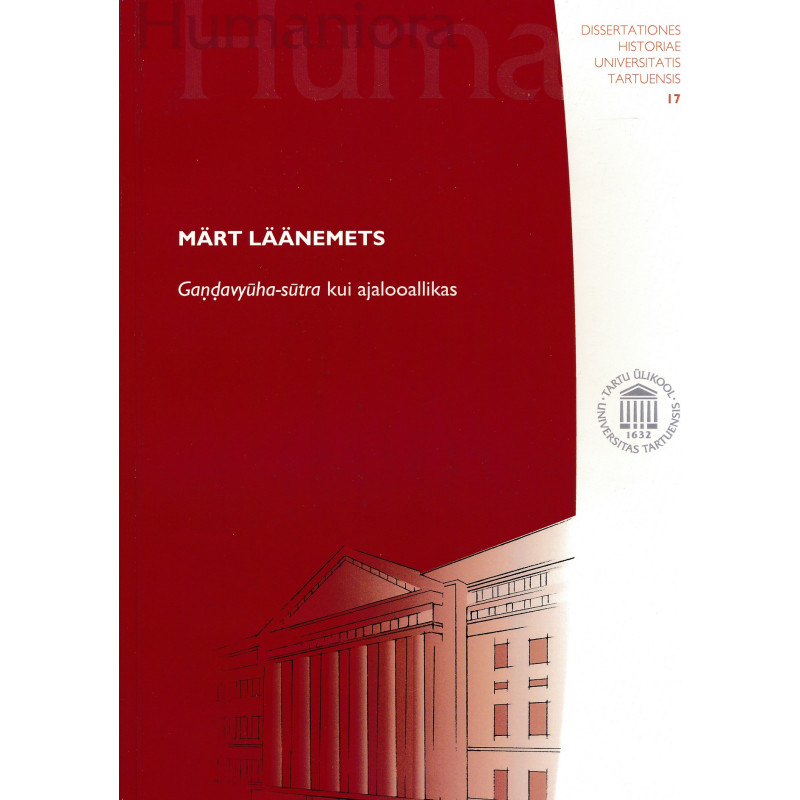



Märt Läänemets
Tartu : Tartu Ülikooli Kirjastus, 2009
281 lk. : ill.
ISBN 9789949191581
Dissertationes historiae Universitatis Tartuensis ; 17
Softcover book in good condition
In the Dissertation an ancient Indian text – the Gandavyūha-sūtra (Gv) – that belongs to the class of Buddhist scriptures commonly known as Mahāyāna Sūtras, is investigated with special attention on it as a historical source. Gv was created in 2nd or 3rd centuries CE and within the period of 5th to 9th century three full translations in Chinese and one in Tibetan appeared. It belongs to the Buddhist canonical collections of the three Mahāyāna traditions – Chinese, Tibetan, and Nepalese – and has been very influential cultural text throughout its long history. This research bases on the investigation of the original Sanskrit text of the Gv with some comparative study of its Chinese translations. The dissertation is mainly composed of formerly published articles and it is focused on the following topics; (1) Gv’s position in the Buddhist canonical literature; (2) Problems of methodology (possible ways of interpretation of the Gv in the context of cultural semiotics, theory of humanistic base texts, and Buddhist didactic); (3) Comparative chronology of the text and its separate versions and translations; (4) Four hypotheses with pros and contras of the possible location of the origin of the Gv; (5) Analysis of the title, composition, and narrative of the Gv in the lysiological scheme of Mahāyāna Buddhism; (6) Personae of the Gv (youth Sudhana, benevolent friends, bodhisattvas, śrāvakas); (7) Influences of the Gv on the early and modern cultures and literatures; (8) Problems of translation of the Gv into Estonian language. Brief surveys of the study of Mahāyāna Sūtras in modern Buddhist studies as well as studies on and translations of Gv are also presented in the dissertation.